#microbat
Text

YIPPEE YAHOO TRANS PEOPLE RISE UP!!!!!
#can you see me#trans day of visibility#transgender#bat#microbat#common pipistrelle#allegedly idk how well i captured the likeness#branching out from super heavy reference/tracing my sketches. we trying lads im still learning
4K notes
·
View notes
Text

Mouse-eared bat
By: W. Curth
From: The Complete Encyclopedia of the Animal World
1980
#mouse-eared bat#microbat#bat#mammal#1980#1980s#W. Curth#The Complete Encyclopedia of the Animal World (1980)
1K notes
·
View notes
Note
Could I get a Hank Venture stimboard with batman, the colors red & black, and plush / irl bats? Thank you!!!
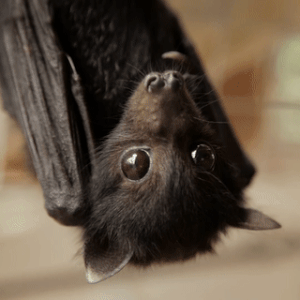






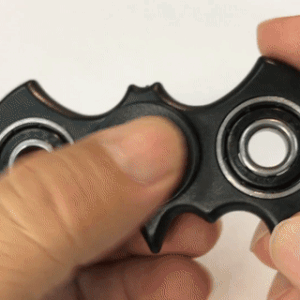
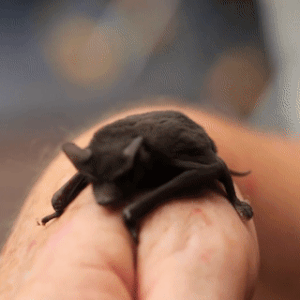

Hank Venture (Venture Brothers) with red and black bats, bat plushies, and Batman!
🦇|🟥|🦇
🟥|🦇|🟥
🦇|🟥|🦇
#weheartstims#stimboard#hank venture#venture brothers#venture bros#red#black#bats#batman#plushies#stuffed animals#hands#fidget cube#lollipop#wing#wings#fidget spinner#fidget toys#stim toys#microbat
76 notes
·
View notes
Text
Bat shoutout time!
Shoutout to Honduran White Bats!! These little guys are usually only about an inch and a half long, and look like Stitch’s cousins!! They curl up in leaves to sleep instead of caves and they sleep in groups of two to fifteen! Look at these lil dudes!!!!!
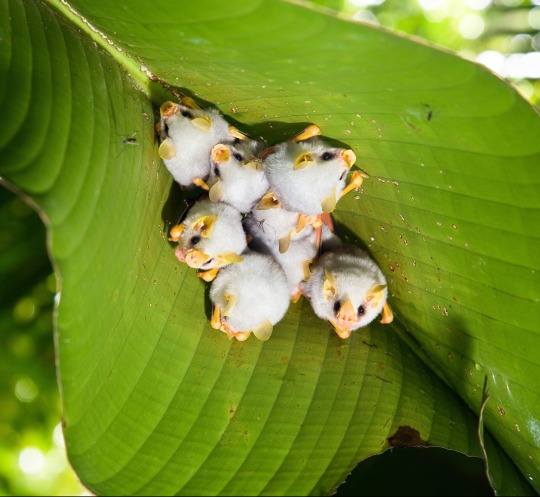
I LOVE BATS
69 notes
·
View notes
Text
Micro Monday
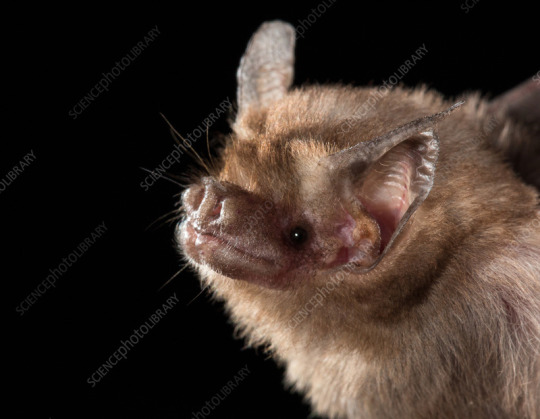
#Kitti's Hognosed bat#Bumblebee Bat#bats of Asia#bat of the day#daily bat#bat#bats#batposting#cute bats#cute animals#World's smallest bat#Microbat#Literally#Just#TINY#almost the world's smallest mammal#I love them
140 notes
·
View notes
Text
Spotted bat (Euderma macalatum)
These highly attractive bats live in canyons all around North America, including the Grand Canyon itself! Their white spots are a form of camouflage, to protect them in dappled light. They have the largest ears of any N. American bat, and eat grasshoppers and moths.
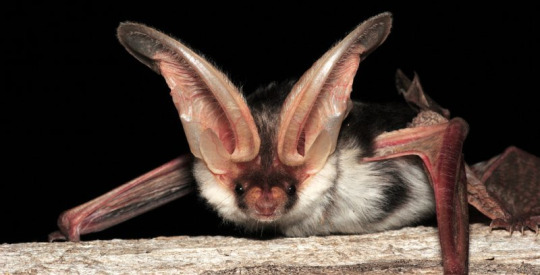
Kitti's hog-nosed bat (Craseonycteris thonglongyai)
These absolutley tiiiiiny bats are, by length, the smallest extant mammals in the world - they max out at just over 3cm (1.3in)! They live in Thailand and Myanmar, in a few smallish communities.
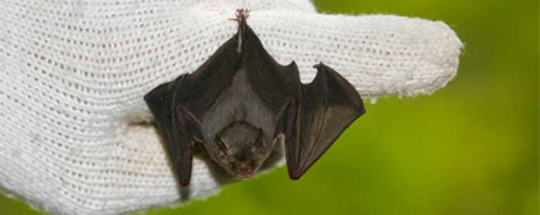
Wrinkle-faced bat (Centurio senex)
Uh oh, it's a strange looking creature! This... cute? bat lives in Central America, and it's face is adapted for various purposes; for example, it has a stronger jaw than other bats, so it can eat a wider variety of fruit! Plus, males have a build-in face mask!

Great flying fox (Pteropus neohibernicus)
These are among the largest of all bats (there are two others of similar sizes), and their wingspan is likely taller than you, reaching 1.7m! This highly social species lives throughout New Guinea and the Bismarck Archipelago, and eats various fruits.

Common vampire bat (Desmodus rotundus)
One of the most famous bats, the common vamp is the only of the three vampires that feeds from mammals. They have lots of adaptations to feed on blood, like heat sensors in their snouts and great ground movement - yup, these bats can gallop!

Brazilian free-tailed bat (Tadarida brasiliensis)
These bats hold a few world records - one of their roosts, Bracken Cave, is believed to be the largest mammalian gathering in the world, and they have the fastest horizontal flight speed of any animal! Their huge roost emergences are a spectacular sight.
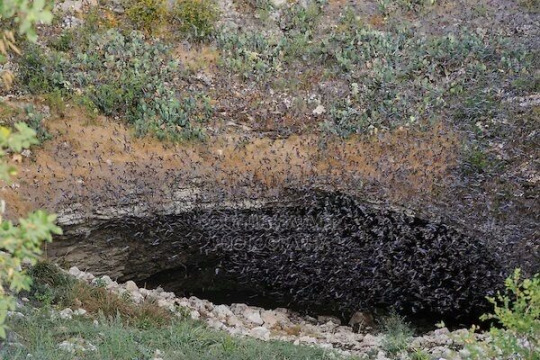
252 notes
·
View notes
Text

List of bat live cams to give you extra serotonin : ) 🦇
Bat world sanctuary batcams including fruit bats and insect bats
Lubee Bat Conservancy flying fox batcam
Charter group birdcams at Tel Aviv University Egyptian fruit batcam
Cluff Ranch Arizona game and fish department batcam
PA Bat box in southwestern pennsylvania batcam
Explore.org flying fox batcam
Explore.org giant flying fox batcam
Devon wildlife trust horseshoe bat batcam
Woodland park zoo batcam (currently out of order)
edit: two have been added at the famous Braken cave by bat conservation international! This is the largest bat colony on Earth!!
Inside Bracken cave
entrance view of Bracken cave
best times to watch according to BCI are 8pm and 7am central US/American time
#batposting#bat live cams#bats#fruit bat#horseshoe bat#microbat#megabat#i love them : )#trying to find all the ones i can to compile them
255 notes
·
View notes
Photo
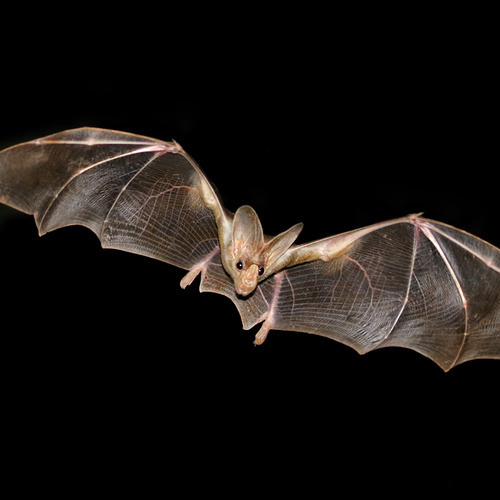
Ghost Bat (Macroderma gigas)
Family: False Vampire Bat family (Megadermatidae)
IUCN Conservation Status: Vulnerable
Most bat species feed either on small, flying insects or on the fruits of trees, but this relatively large microbat, named for its pale coloration, is unusual in that it feeds largely on vertebrates (mainly birds, lizards, frogs and small mammals, including smaller bats.) Found in scattered populations across northern Australia, Ghost Bats spend the day roosting in small colonies within caves, mines and cavities in rocks, and emerge at night to hunt (typically in wooded areas, ranging from arid woodlands to rainforests.) They hunt in a manner more akin to an owl than to a typical predatory bat: after arriving at a suitable hunting site they position themselves on an elevated tree branch and wait for signs of prey, which they detect using echolocation, an acute sense of hearing and sensitive eyes. They subdue their prey with their teeth; airborne prey (which may be as large as Bar-Shouldered Doves, which are only slightly smaller than a Feral Pigeon) is brought to the ground by a series of powerful bites to the head and neck, while terrestrial animals are pinned to the ground by a specialized claw on the bat’s thumb and then torn apart by its jaws. As they typically breed deep in caves almost nothing is known about the reproduction of this species except for the fact that they typically produce only a single pup at a time, and that said pup clings to its mother constantly until it is mature enough to hunt on its own - when its mother flies, the pup is able to ride on her belly by clinging onto her fur as well as one of a pair of non-functional “false nipples” that seem to serve the sole purpose of allowing the pup to maintain its grip. The Ghost Bat is threatened by the destruction of roosting sites used by colonies, and by the abandoning of otherwise suitable roosting sites following disturbances by human activity (it has been reported that after being scared away from a roosting site members of this species may not return for months or even years, and without a safe roosting site they are vulnerable to predation during that day.) One of the largest and most important colonies of Ghost Bats is found in the Mount Etna Caves National Park in eastern Queensland.
-----------------------------------------------------------------------------
Image Source:https://www.inaturalist.org/taxa/41326-Macroderma-gigas
Happy Halloween!
#ghost bat#australian false vampire bat#bats#bat#microbat#microbats#chiroptera#megadermatidae#mammal#mammals#mammalogy#zoology#biology#chiropterology#wildlife#australian wildlife#Happy Halloween!#tw bat#tw bats#animal#animals#australian animals#australian animal
178 notes
·
View notes
Text


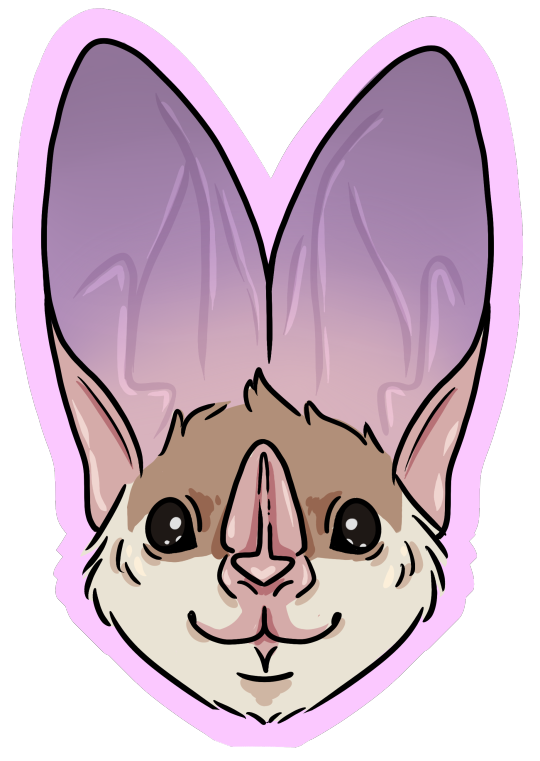
The Australian Ghost bat (Macroderma gigas) is the country's largest microbat and the second largest globally. These bats are the only carnivorous bats in Australia, hence one of their common names the False Vampire. However, they do not drink blood, instead, they specialise in consuming insects, frogs, birds, lizards, and small mammals such as other bat species (such as the Bentwing, Horseshoe, Leafnosed, Little Cave Bat, and many species of the Sheath-tailed bats)
SIZE: The Ghost bat is 10 – 13cm long, has a wingspan of 500 mm, and weighs 130 – 170 grams.
LOCATION: They are found in tropical northern Australia, primarily in the Northern Pilbara and Kimberly regions in Western Australia. Northernmost areas of Northern Territory, and from Cairnes to Mount Etna in Queensland.
THREATS: Man-made: barbed wire fences, tree clearings, loss of old mines and caves, climate change, and tourism
Natural: wildfires, quolls, dingoes, and pythons
DEVELOPMENT: Once mating is complete, the sexes will separate themselves into gender-specific colonies. The females will form maternity groups of up to 1000 bats during the winter months to maintain body temperature as they naturally run quite low. A mother will birth one pup per year, taking three months to gestate. The pup will suckle milk for four weeks from the armpit and once they reach seven weeks, they will start learning how to fly and hunt. Weaning ends at 3 months, where the pups are now able to fly independently and they will reach sexual maturity for females at a year, whereas males will reach it at two years of age. The lifespan of wild Ghost bats is unknown, however, in captivity, they will live for approx. 8 – 13 years, the oldest being 20 years.
#artists on tumblr#art business#small business#australian artist#making stickers#zoology#biology#zoology stickers#Macroderma gigas#microbat#microbat stickers#false vampire bat#australian ghost bat#ghost bat#ghost bat stickers#education with stickers#etsy artist#etsy store#ko fi shop#link in bio#learn with me
15 notes
·
View notes
Text
Yk what? *holds you like this*
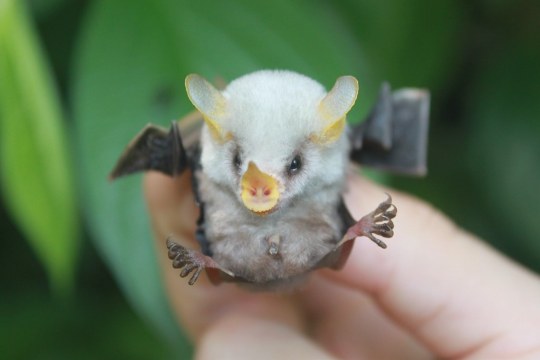
6 notes
·
View notes
Text

Gullible grandson that somehow has his own house and his grandmother who wants to hit him over the head with a shoe repeatedly

#OCs#bat art#my art#original character#western red bat#bats#cute#chiroptera#microbat#furry fandom#furry community#digital art#character design
39 notes
·
View notes
Text

Freya the Hoary Bat, via
582 notes
·
View notes
Text

Long-eared bat
By: Unknown photographer
From: Wildlife Fact-File
1990s
559 notes
·
View notes
Note
TWO bat

They're Girlfriends
#bats and owls on demand#order yours today it's free#ask quohotos#bats#I love bats#bats love bats#megabat#microbat#omg flying foxes are so much larger compared to most microbats#girlfriends#lesbian#paint 3d#paint3d#ms paint#my art
10 notes
·
View notes
Text
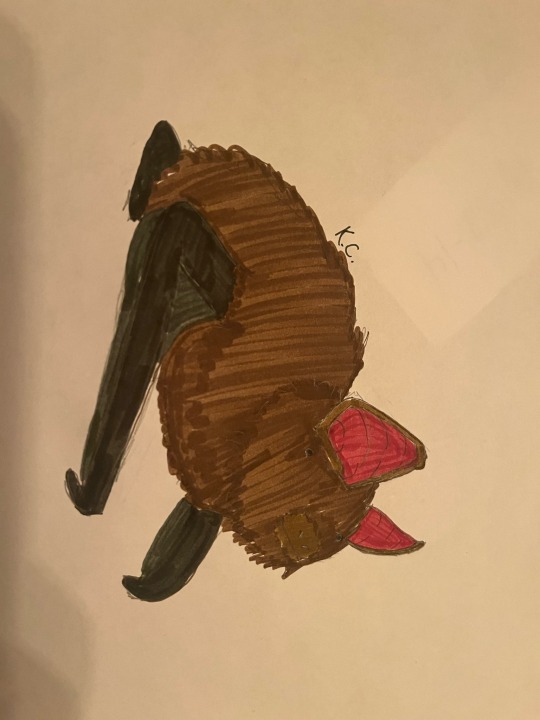
I drew a bat I drew a bat I draw a bat I drew a bat I drew a bat!!
Here’s the sketch before I colored it
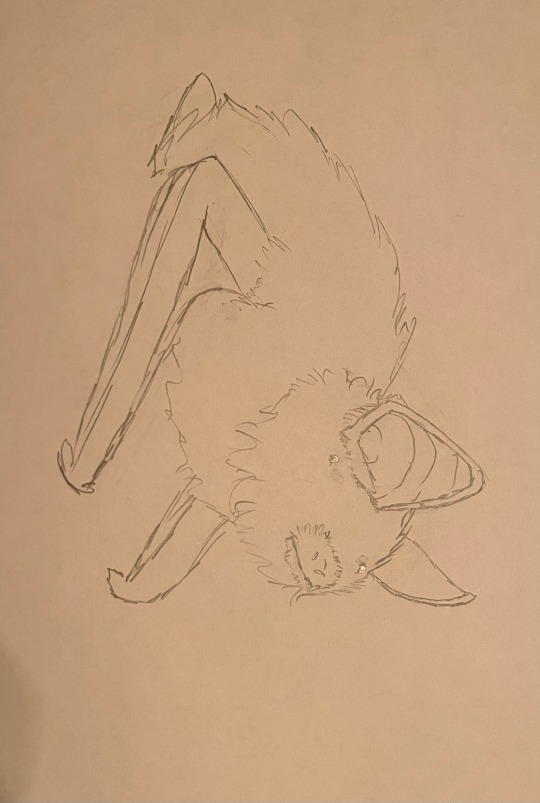
I LOVE BATS I LOVE BATS I LOVE BATS (S SPAM)
#tw repition#repitition#cw repetition#repetition cw#repetition tw#bat#bats#art#drawing#bat art#bat drawing#I love bats#microbat#megabat#little brown bat
27 notes
·
View notes
Note
hey i saw your ask at one-weird-mammal-a-day and had a bat question! is there a reason for bats having so much diversity in their faces between species? do different kinds of weird bat faces say anything about the species/does their face/snout shape help them out somehow?
Yes!!! They have some weird faces but there’s always a reason :] also if the first part of this post seems kinda rushed it’s bc I typed the whole thing and it didn’t save so I had to re-do it lol
So one of the main face weirdnesses in bats is nose-leaves. These are fleshy protrusions found around the nose in microbat species. They help to direct echolocation calls; many bats echolocate through their nostrils, rather than the mouth!



Nose-leaves come in various shapes for different purposes. For example, horseshoe bats (third photo) have highly directional calls; they’re hard to pick up on a bat detector because the call has to be going directly to the microphone. This is all because of their fun noses!
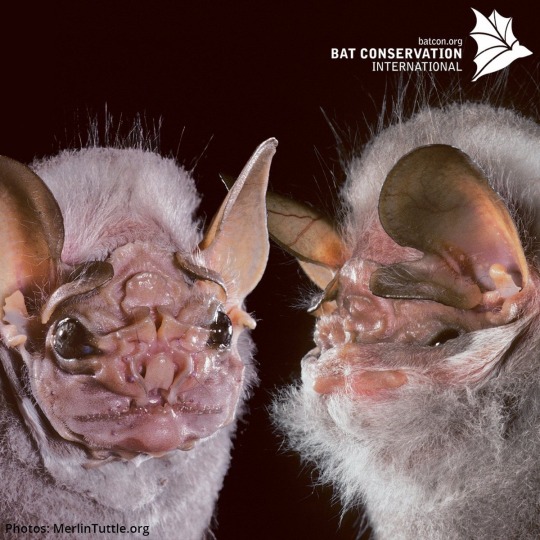
Wrinkle-faced bats certainly have uhhhhh faces don’t they? These guys are WEIRD. Fun fact, their scientific name (C. senex) means old man, which I think is a little mean. Their strange face has three main purposes. First, their jaw is shaped differently to similar bats, allowing them to have a much stronger bite force, so that they can eat harder fruits. This means that they are still fed when softer fruit isn’t available. The second reason is that they have food storage pouches in their cheeks, so there’s lots of folded skin when these aren’t being used. The third reason only applies to males; they have a fold of skin that they use to cover part of their face while roosting (the right-side bat on the photo). It’s also been theorised that the wrinkles channel air so that the bat can breathe clearer, or that it helps channel fruit juices into the bat’s mouth.
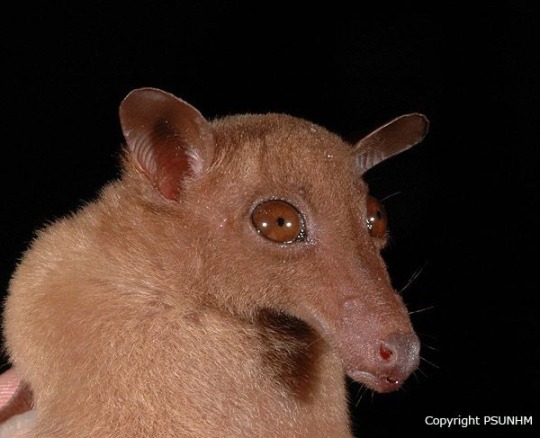
Some bats have very long faces, such as this Hill long-tongued fruit bat! These will be pollinating bats, who feed on nectar in flowers. The long, slender snout allows them to reach into the flower and drink the nectar; some also use long tongues for this, such as the tube-lipped nectar bat, who’s tongue is 1.5x the length of it’s body!
Megabats usually have plainer faces than microbats, since they don’t echolocate (sans Rousettus). They mainly use sight and smell to find food, like other animals, so their faces are usually much more ‘normal’. But they’re not without their standouts!
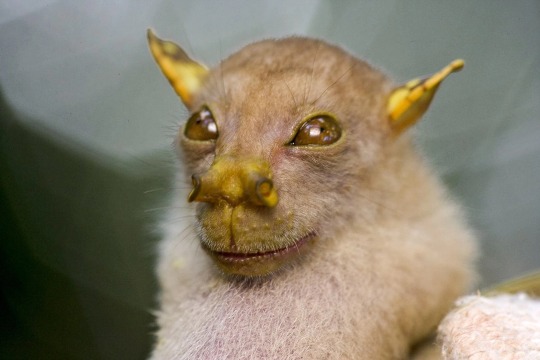
This is an eastern tube-nosed bat! They have two elongates nostrils, which can move independently of one another. They use this to find ripe fruit and nectar filled flowers and concentrate the scents.
Thank you for letting me ramble about bats!! I actually have an entire blog for bats that I plan on posting stuff like this on, it’s @megabat-nerd if ur interested :3
25 notes
·
View notes